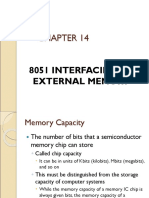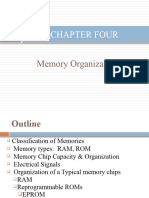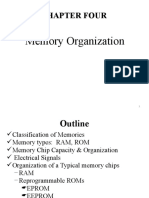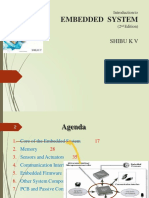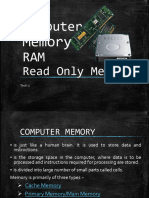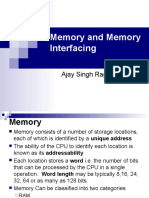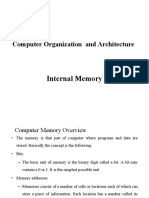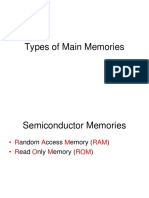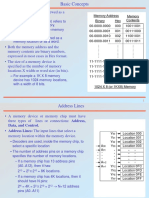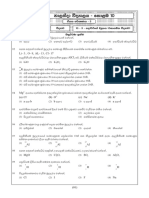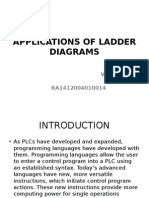0% found this document useful (0 votes)
60 views25 pagesMicroprocessor Lecture 5 Full
The document discusses memory concepts related to microprocessors including RAM, ROM, memory mapping, and I/O device interfacing. It describes different types of RAM like SRAM, DRAM, SDRAM and different types of ROM like ROM, PROM, EPROM, and EEPROM. It explains the differences between these memory types and how they are used. The document also discusses memory mapping and shows an example memory map for a microprocessor system with ROM, RAM, a 7-segment display and switch.
Uploaded by
noway snirfyCopyright
© © All Rights Reserved
We take content rights seriously. If you suspect this is your content, claim it here.
Available Formats
Download as PPTX, PDF, TXT or read online on Scribd
0% found this document useful (0 votes)
60 views25 pagesMicroprocessor Lecture 5 Full
The document discusses memory concepts related to microprocessors including RAM, ROM, memory mapping, and I/O device interfacing. It describes different types of RAM like SRAM, DRAM, SDRAM and different types of ROM like ROM, PROM, EPROM, and EEPROM. It explains the differences between these memory types and how they are used. The document also discusses memory mapping and shows an example memory map for a microprocessor system with ROM, RAM, a 7-segment display and switch.
Uploaded by
noway snirfyCopyright
© © All Rights Reserved
We take content rights seriously. If you suspect this is your content, claim it here.
Available Formats
Download as PPTX, PDF, TXT or read online on Scribd
/ 25


